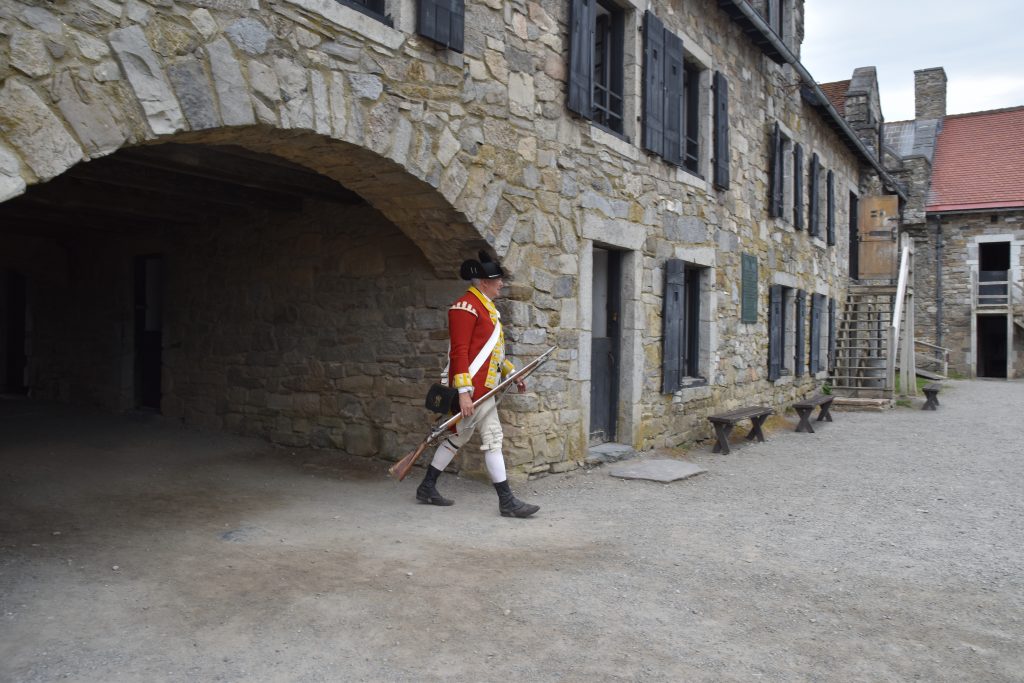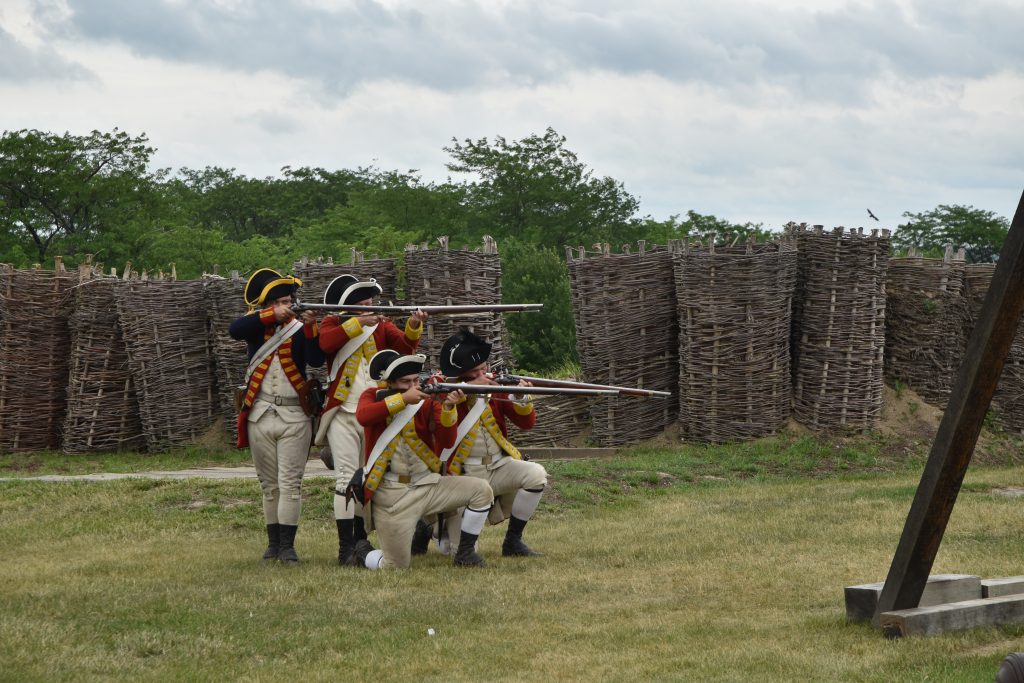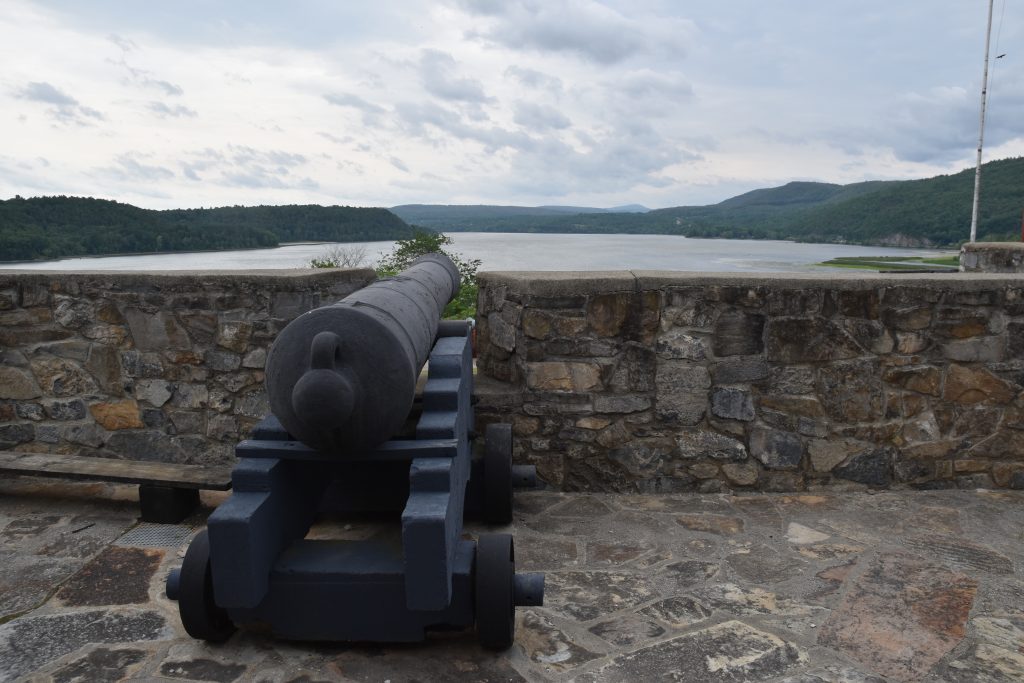Today we visited Fort Ticonderoga to get the lay of the land. Every year they focus on a specific year in the history of the fort. This year it is 1774, two years before St. Clair arrived. Although relations were tense between the colonies and the British, there was no war and only a few soldiers were stationed at the fort. In 1775, only three weeks after hostilities broke out at Lexington and Concord the colony of Connecticut sent Benedict Arnold and the colony of Massachusetts sent Ethan Allen to take the fort. They arrived around the same time, and although the situation was tense between the two commanders, they took the fort by walking in through the gate in the early morning hours and demanding the surrender of the British forces. Henry Knox soon showed up and took the cannon from the fort back to Massachusetts to help drive the British out of Boston.

The next year Fort Ticonderoga became the jumping-off place for the colonial campaign to take Canada and make it the fifteenth colony and the place of retreat after that campaign failed. Through the summer, fall, and winter the men there worked to make repairs on the fort and built an earthen fort across the narrow neck of Lake Champlain, but Washington called the majority of the men back to help with the campaign in New York. Militia groups came and went. Most militia groups signed up for a period of a year or less and returned home when their time was up.
Command of the fort was constantly changing as Washington reorganized the army and generals jockeyed for position. Arthur St. Clair was appointed as commander of the fort as British General Burgoyne set out from Canada with 18,000 British soldiers, German mercenaries., Native Americans, and Canadian Loyalist forces. St. Clair arrived to find just over 1500 poorly prepared, unhealthy troops at the fort three weeks before the British arrived. He abandoned the fort, which divided the British forces and resulted in battles scattered throughout the area. Burgoyne, unable to win with the “unfair” battle style of the Americans, and unsupported by other British officers, surrendered three months later, the first wholesale surrender of a British army anywhere and the event that brought the French into the war.




